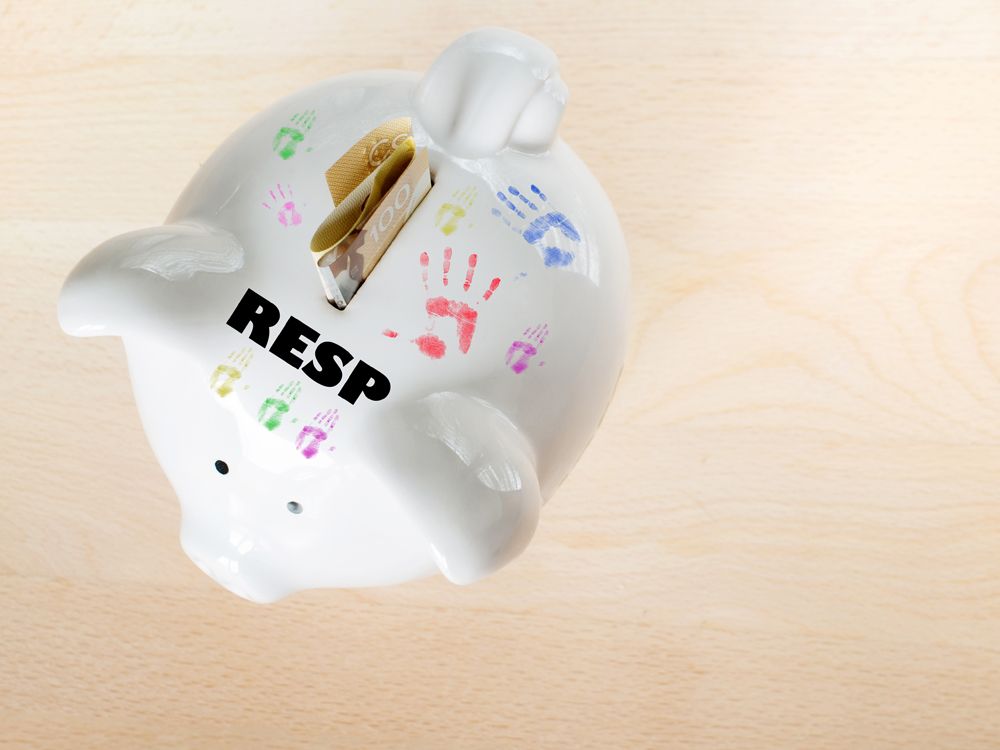I have been spinning, aka over thinking, most likely because my first just entered high school and am wondering how the heck did this time go so fast. Just thinking about strategies on how best to help them fund their post secondary in the most tax efficient and FAIR manner. I am typing this out will help me stop spinning and get some advice from those wiser here.
Some pieces of information that may (or may not) be important:
- The youngest has indicate that she would like to study in Europe for her post graduate, but that's a pretty long ways. She is less decided on her career path, but knows she wants a 'profession' She is considering investment banking, business, or medicine (though she doesn't enjoy science as , so I don't see that in the future).
- Our goal is to gift a debt free education to our kids to whatever level they go. This would also include us delaying our retirement if required, but defiantly not preferred. I am not sure if this is feasible if they go out of country or continue with a Phd (most likely not)
- There is also a decent chance on scholarships for them if not requiring financial need as a criteria, but who knows.
I am guessing that if both my kids go post graduate or goto the US, the RESP won't cover everything, and we do have in trust accounts for them if they don't get scholarships. If they get more in scholarships, or from work, etc, then we are okay gifting them the remainder.
My questions:
With the probability of more than one degree for each child (but not guaranteed), is it better to take out the EAP for the first degrees, in case the second degree doesn't happen, or spread it the withdrawals over the both degrees for both kids?
For example, if I take current balances. There's about $120k EAP + $100K contribution.
Option 1: Plan based on just first degree
2 kids, 4 years each. $120K /2 /4 so take about $15k taxable each year to cover the first degree
Use the remaining contributions and other sources to fund the post grad.
Option 2: Plan based on both kids going to post grad
2 kids, 4 years each, $120K/2/6 so about $10K taxable each year to cover both degrees
Option 3: Just take out EAPS based on child's income for that year to maximize gains.
Concerned that this could lead to unfairness if one gets more scholarships or ends up working.
I did these examples as really quick ones, I do understand about tax brackets and things, I am just starting to think of considerations of essentially do I plan for an undergrad only or undergrad AND post grad for each kid when withdrawing RESPs.
Just starting to get the wheels going and look for thoughts and considerations.
Some pieces of information that may (or may not) be important:
- Current value is about $215k depending on the day in a single family plan
- Full $50k has been contributed for oldest plus max grant received
- Next year, will be the last contribution for the youngest to get her final grant and will complete the $50k
- As of 2022, it will be $100k contributions and $120k+ in EAP, most like more during time when she enters school
- Two kids - oldest will start to access the funds in 3 years
- Youngest will access fund in 6 years.
- It's 99% sure they will go for a 4 year degree somewhere in Canada, maybe at home, mostly like not.
- They have both indicated that their interests will require at least another post graduate degree. Based on their personalities, and capabilities, I would say this is quite realistic.
- The youngest has indicate that she would like to study in Europe for her post graduate, but that's a pretty long ways. She is less decided on her career path, but knows she wants a 'profession' She is considering investment banking, business, or medicine (though she doesn't enjoy science as , so I don't see that in the future).
- Our goal is to gift a debt free education to our kids to whatever level they go. This would also include us delaying our retirement if required, but defiantly not preferred. I am not sure if this is feasible if they go out of country or continue with a Phd (most likely not)
- There is also a decent chance on scholarships for them if not requiring financial need as a criteria, but who knows.
- In withdrawing the money, we would like to do it in the most tax effective way possible
- We are trying to be 'fair' that if one child uses less because they choose a less expensive option (living at home or less expensive program, more scholarships, ect), we would like them to be able to transfer their remaining 'share' to the TSFA or something.
I am guessing that if both my kids go post graduate or goto the US, the RESP won't cover everything, and we do have in trust accounts for them if they don't get scholarships. If they get more in scholarships, or from work, etc, then we are okay gifting them the remainder.
My questions:
With the probability of more than one degree for each child (but not guaranteed), is it better to take out the EAP for the first degrees, in case the second degree doesn't happen, or spread it the withdrawals over the both degrees for both kids?
For example, if I take current balances. There's about $120k EAP + $100K contribution.
Option 1: Plan based on just first degree
2 kids, 4 years each. $120K /2 /4 so take about $15k taxable each year to cover the first degree
Use the remaining contributions and other sources to fund the post grad.
Option 2: Plan based on both kids going to post grad
2 kids, 4 years each, $120K/2/6 so about $10K taxable each year to cover both degrees
Option 3: Just take out EAPS based on child's income for that year to maximize gains.
Concerned that this could lead to unfairness if one gets more scholarships or ends up working.
I did these examples as really quick ones, I do understand about tax brackets and things, I am just starting to think of considerations of essentially do I plan for an undergrad only or undergrad AND post grad for each kid when withdrawing RESPs.
Just starting to get the wheels going and look for thoughts and considerations.





